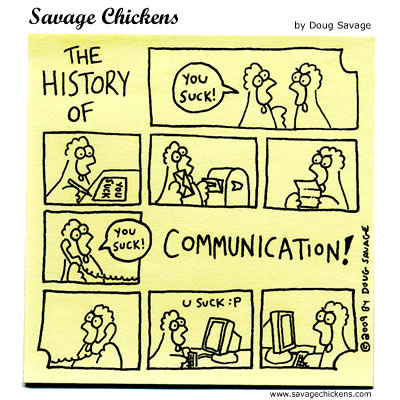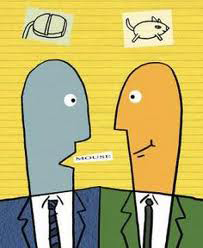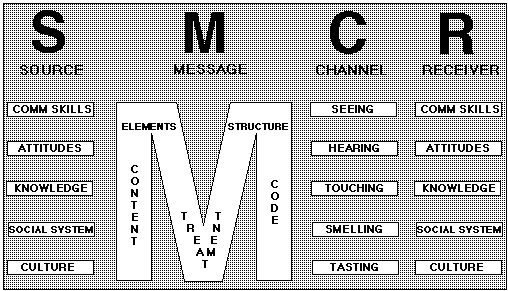It will be recorded on videotape in front of the class. A suggestion would be to do your presentation on your report in your previous assignment where you have already done a lot of the work and where the topic is fresh in your mind and you have your primary and secondary data researched already. You don’t have to though, you can pick another topic if you wish however it must revolve around an industry you are interested in starting a career in. Make sure you know when you are up as it may be difficult to reschedule you without advance notice. If you can’t make the date, swap with someone who will.
You will be asked at least 10 questions
How important are the following when delivering a presentation?
This assignment demonstrates your listening and speaking skills. A lot more information can be found on http://www.irish21stcenturystudents.blogspot.com/ if you look up the Digital Presentations subject covered on this blog
Listening and Speaking - Oral Presentation Skills (To include non-verbal and visual
communication)
o Learners should make a presentation of 5 – 10 minutes in duration.
o The presentation should be on a topic related to a career path you are interested in .
o It should include appropriate visual supports.
o It should include a question and answer session at the end of the presentation.
o It should assess the learner’s ability to communicate to a group of people
effectively.
o The presentation should be recorded on visual recorder.
Assessment Criteria
• Evidence of thorough preparation and rehearsal 3
• Clear structure with beginning, middle, end and linking 3
• Interest sustained, very good rapport with the audience, presentation
tailored to environment, and suitable visual supports used 3
• Good voice control, with variety of tone, clarity of diction and pace, body
language, gesture, stance all excellent 3
• Ability to interpret and respond appropriately to questions asked 3
You will be asked at least 10 questions
How important are the following when delivering a presentation?
• Clarity of voice, pitch, tone, volume
• Pace, speed, articulation
• Body language used in a formal and informal context
• Formal v informal language
• Confidence
• The environment
• Visual communication
• Posture
• Clothing
• Facial expression
• Body language
Why do we present?
• To educate
• To advertise
• To inform
• To aid meaning
• To express ideas
• To persuade
Useful Powerpoint Presentation video tutorials
HOW TO Give a Great Presentation - 7 Presentation Skills and Tips to Leave an Impression
The video below provided by Microsoft Europe shows the potential and advantages of Powerpoint 2010
Youtube Video:Powerpoint 2010: The Possibilities - Duarte HD
Here is another demo for how to create a Powerpoint 2010 presentation
Youtube Video:Creating a Presentation - PowerPoint 2010
Uploaded by mullinsJ08 on 2 Sep 2010
Curious about inserting a movie into a presentation?The tutorial below shows you how to do it in Powerpoint 2007.
Youtube Video: PowerPoint 2007: Inserting a Movie into a Presentation
Youtube Video: PowerPoint 2007: Inserting a Movie into a Presentation
Uploaded by gcflearnfree on 4 Jun 2008 from http://www.youtube.com/redirect?q=http%3A%2F%2Fwww.gcflearnfree.org%2F&session_token=muFIUxalLYGbUVL_FR9LfCIkADx8MTMxMTYwNTQzOEAxMzExNTE5MDM4
How to animate text in a Powerpoint presentation which will let your text move, spin or fly from space to space
Youtube Video:How to Animate Text in a PowerPoint Presentation For Dummies
Uploaded by fordummies on 26 Feb 2009
Here is a video tutorial about how to make a powerpoint animation
Youtube Video:
How to make a powerpoint animation : tutorial
Uploaded by liamturn97 on 28 Oct 2009
Good Powerpoint Examples Video Tutorials
Curious about how to create a really good powerpoint? Have a look at the video below to help guide you. It concerns how to create create presentations rather than bad ones.
Youtube Video: How to create an Awesome PowerPoint presentation
Uploaded by mattedmundson on 3 Nov 2009
Youtube Video: Good Powerpoint Examples
Uploaded by nofearpublicspeaking on 27 Apr 2010
Presentation Advice Videos
The video below provided by Speakfirst focuses on how to improve your presentations comparing mistakes with improvements
Youtube Video:Presentation skills - How to improve your presentations
Uploaded by Speakfirst on 20 Jul 2009 http://www.youtube.com/redirect?q=http%3A%2F%2Fwww.speak-first.com%2Fcourses%2Fpresentation-skills.aspx&session_token=01esgOghAP2AzkvMW8sSdoTg_gJ8MTMxMTYwNjI2M0AxMzExNTE5ODYz
Apple's CEO Steve Jobbs is considered to be one of the greatest public speakers in the world today. Here is a video provided by BNET Video
Youtube Video:
Present Like Steve Jobs Online videos for busy business professionals BNET Video
Uploaded by BNETvideo on 17 Apr 2008
Youtube Video: Death By Powerpoint
Answering questions after your presentation can appear daunting as you do not know what it is you will be asked. There is only so much that can be prepared.
Youtube Video: Ep 10. How To Answer Questions On Your Presentation - Presentation Skills - Public Speaking
Youtube Video: Ep 10. How To Answer Questions On Your Presentation - Presentation Skills - Public Speaking
Uploaded by BananaManaTV on Jun 21, 2010
Universal facial expressions signify anger, fear, sadness, joy and disgust. Thus, if you smile frequently you will be perceived as more likable, friendly, warm and approachable. Smiling is often contagious and a person will react favorably. We have 250,000 facial expressions.
1. When you meet someone for the first time, how do you greet him or her?
2. Do you use the same greeting for men as for women?
3. How do you greet a friend of the same sex as yourself?
4. How do you greet a friend of the opposite sex?
5. How do you greet members of your family: children adults old people?
6. Describe three gestures you use frequently and say what they mean.
Non Verbal Communication
-Communication without words
-80%
“Actions Speak Louder Than Words.”
It's not always what you say but how you say it which can help deliver the effectiveness of your message
Youtube Video
Body Language at Work by Peter Clayton
Uploaded by 121series on 18 Dec 2008
žFacial expression
Universal facial expressions signify anger, fear, sadness, joy and disgust. Thus, if you smile frequently you will be perceived as more likable, friendly, warm and approachable. Smiling is often contagious and a person will react favorably. We have 250,000 facial expressions.
Your eye-contact can give clear indicators regarding whether you are telling the truth or not.Have a look at these 2 short video clips to see what I mean:
Youtube Video
Anthony Weiner Scandal: Body Language Similarities to Bill Clinton, Tiger Woods, Elliot Spitzer
Uploaded by ABCNews on 9 Jun 2011
Body Language Breakdown: Obama on '60 Minutes', Trump, and the Royal Wedding
Uploaded by FoxNewsInsider on 13 May 2011
Posture
-Your posture–including the pose, stance and bearing of the way you sit, slouch,
stand, lean, bend, hold and move your body in space affects the way people
perceive you.
stand, lean, bend, hold and move your body in space affects the way people
perceive you.
-Mirroring the other person in your posture style, where your left side complements their right side can increase the likelihood of a favourable perception of the communicator.
-Displaying a forward lean or a decrease in a backwards lean also signify
positive sentiment during communication.
positive sentiment during communication.
Youtube Video
Body Language - Open Posture Vs. Closed Posture
Uploaded by BodyLanguagePro on 19 Oct 2009
Gesture
A gesture is a non-vocal bodily movement intended to express meaning. They
may be articulated with the hands, arms or body, and also include movements of
the head, face and eyes, such as winking, nodding, or rolling one's eyes.
may be articulated with the hands, arms or body, and also include movements of
the head, face and eyes, such as winking, nodding, or rolling one's eyes.
If you fail to gesture while speaking, you may be perceived as boring, stiff an
unanimated.
unanimated.
Youtube Video
Body Language: The Meanings of Hand Gestures
Uploaded by positivesimona on 28 Oct 2009
Physical Touch
Touches that can be defined as communication include handshake, holding
hands, kissing (cheek, lips, hand), back slapping, give five, a pat on the shoulder,
and brushing an arm. The meaning conveyed from touch is highly dependent
upon the context of the situation, the relationship between communicators, and
the manner of touch.
hands, kissing (cheek, lips, hand), back slapping, give five, a pat on the shoulder,
and brushing an arm. The meaning conveyed from touch is highly dependent
upon the context of the situation, the relationship between communicators, and
the manner of touch.
Youtube Video
10 Types of Handshakes
Uploaded by NewFinancialWisdom on 1 May 2009
1. When you meet someone for the first time, how do you greet him or her?
2. Do you use the same greeting for men as for women?
3. How do you greet a friend of the same sex as yourself?
4. How do you greet a friend of the opposite sex?
5. How do you greet members of your family: children adults old people?
6. Describe three gestures you use frequently and say what they mean.

















